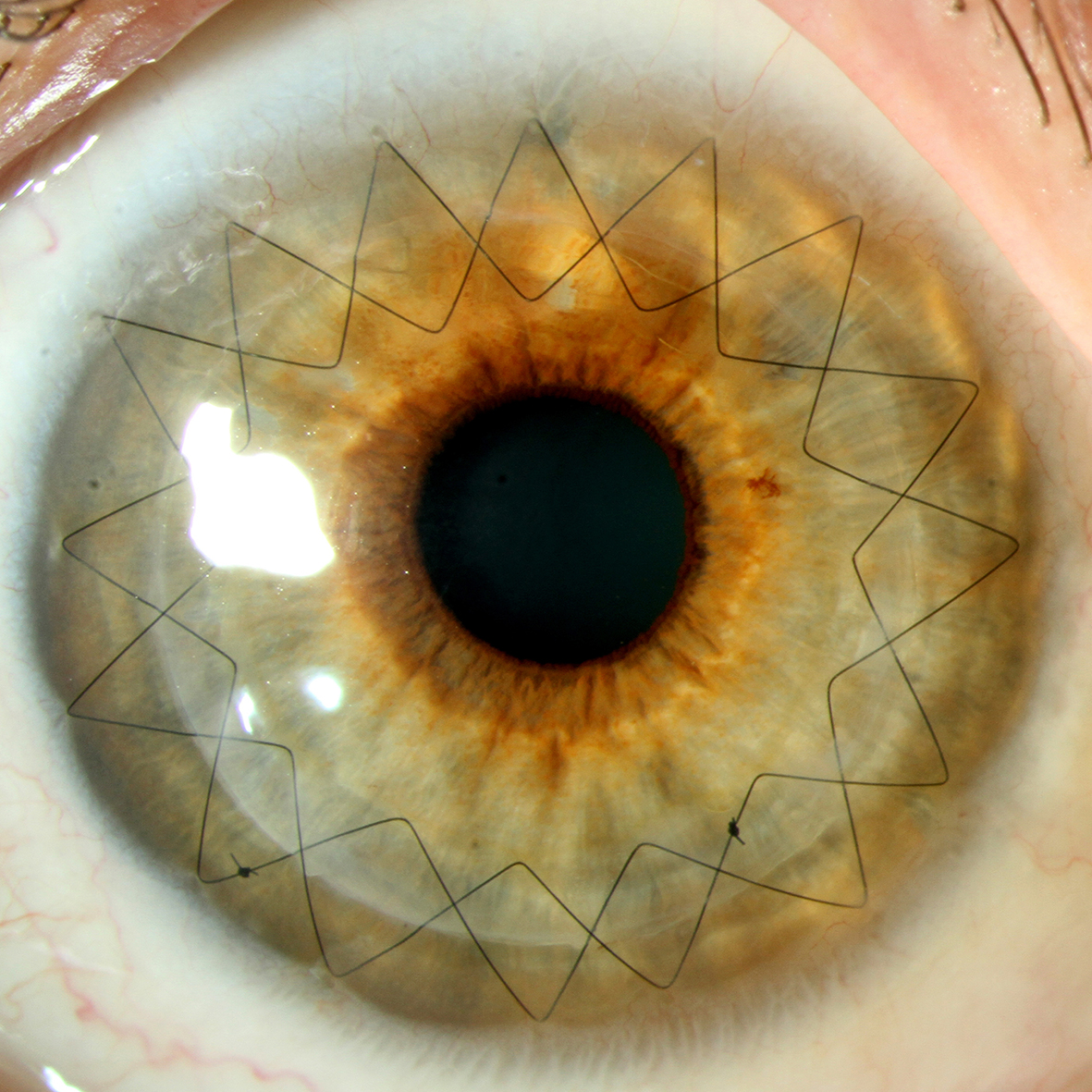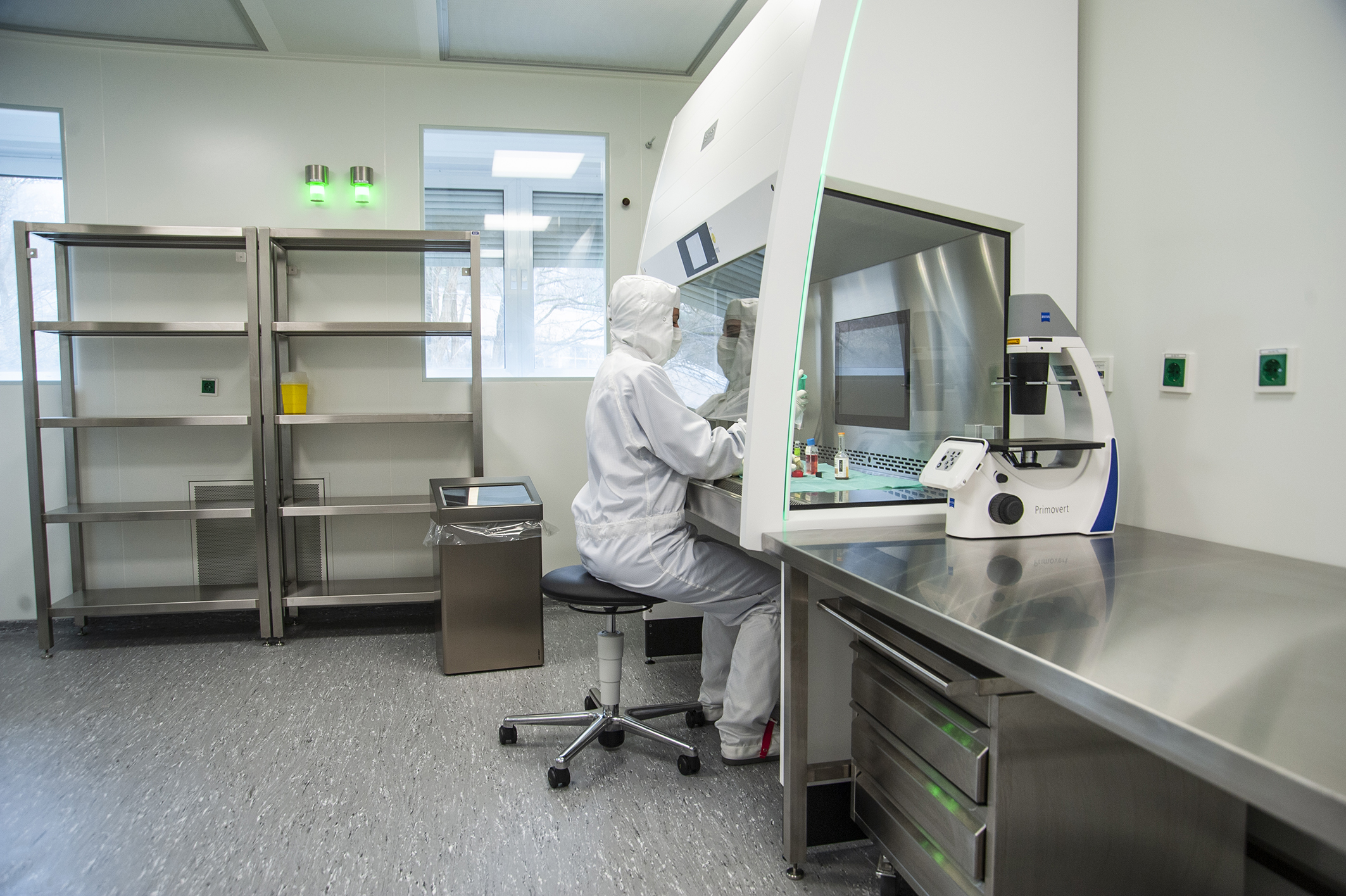Perforating keratoplasty
With perforating keratoplasty, the entire thickness of the cornea, i.e. the epithelium, stroma and endothelium, is replaced. Your own, diseased or cloudy cornea is removed and a new donor cornea is inserted. The excretion of both your own and the donor corneas to the correct size is usually done with the help of the excimer laser. The new horn skin is then sewn in with two continuous sutures ("star") or with single sewn sutures, which are normally pulled for 12 and 18 months.
This type of surgery is typically performed under general anesthesia.
DMEK
With DMEK (Descemet Membrane Endothelial Keratoplasty) only the innermost layer of the cornea, the endothelium, is replaced. This layer is responsible for maintaining homeostasis and the transparency of the cornea. The donor tissue is fixed using gas, which presses the new donor tissue against the stroma. For this, a strict supine position is necessary after the operation.
This surgical technique is possible in retrobulbar or even drip anesthesia.
DALK
In a DALK (Deep Anterior Lamellar Keratoplasty), the epithelium and the anterior stroma, i.e. the top two layers of the cornea, are replaced while the endothelium, the innermost layer, remains. As with perforating keratoplasty, the donor cornea is fixed with sutures.




